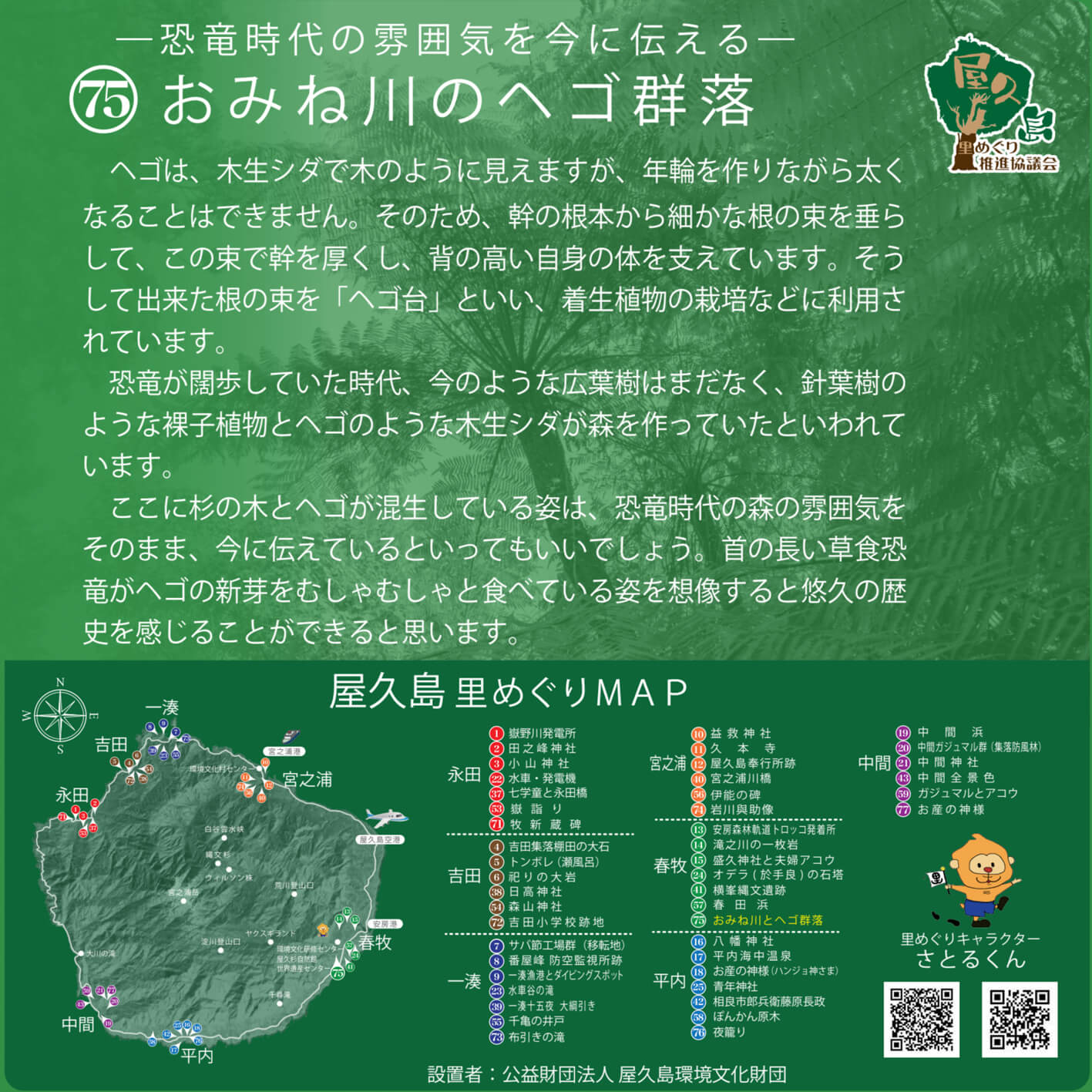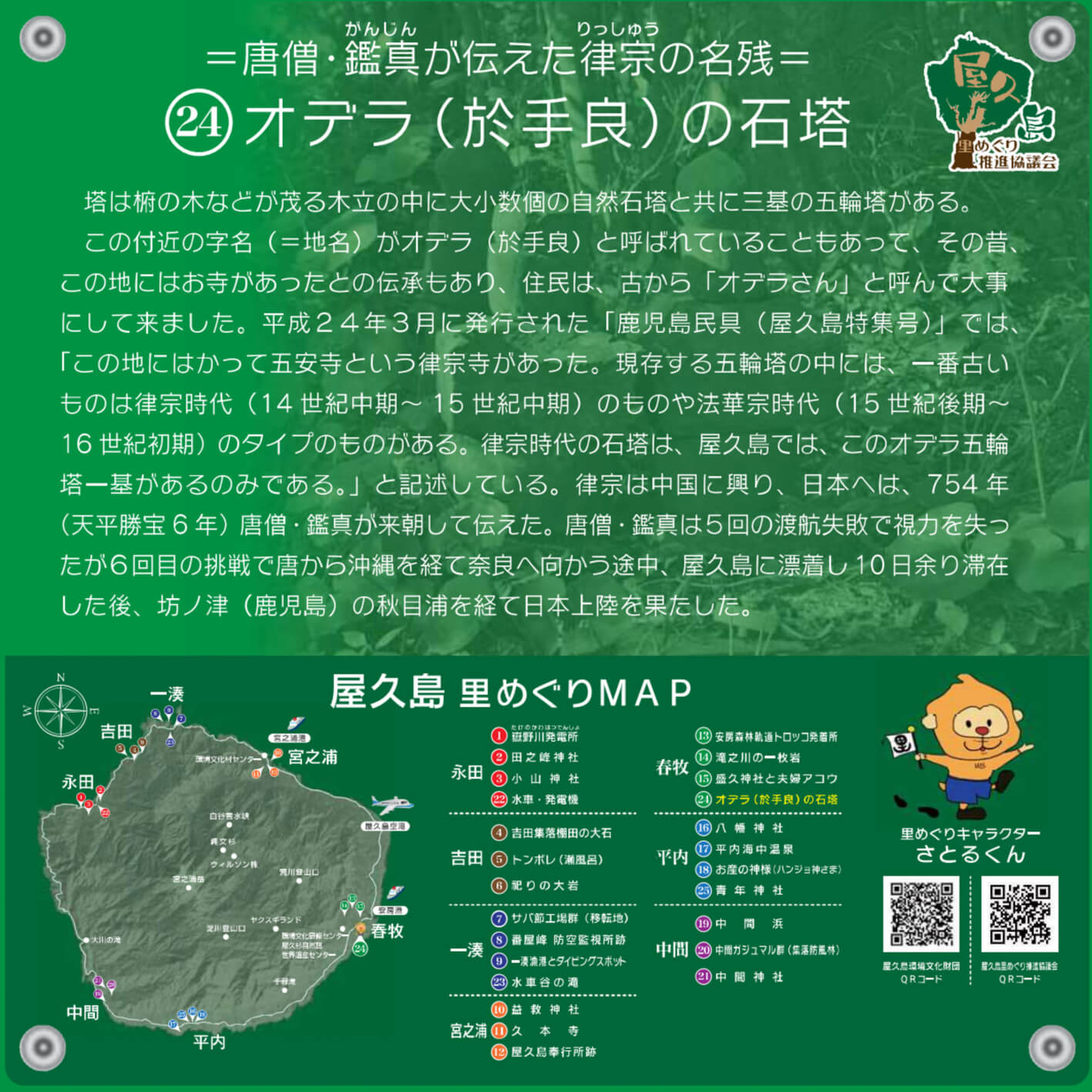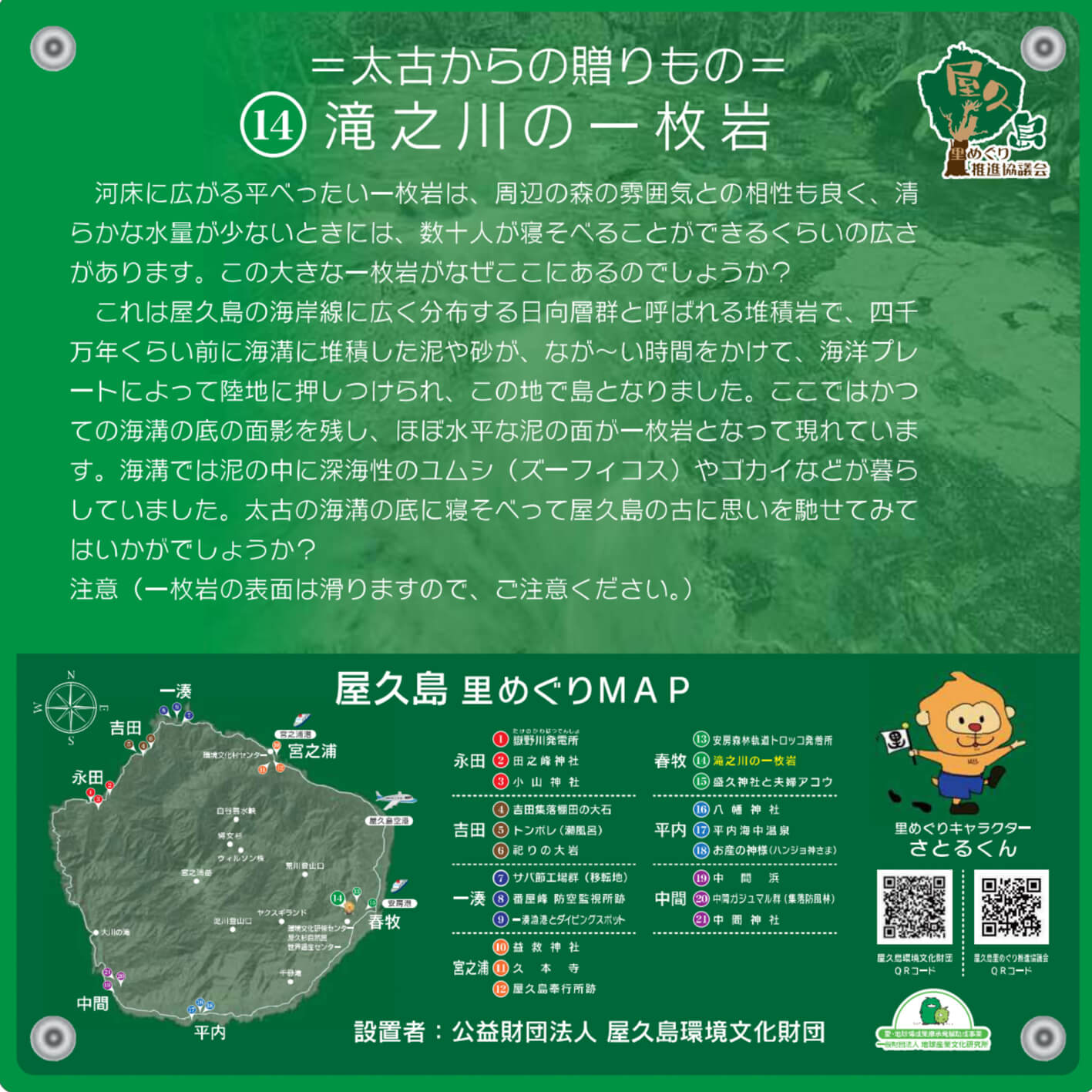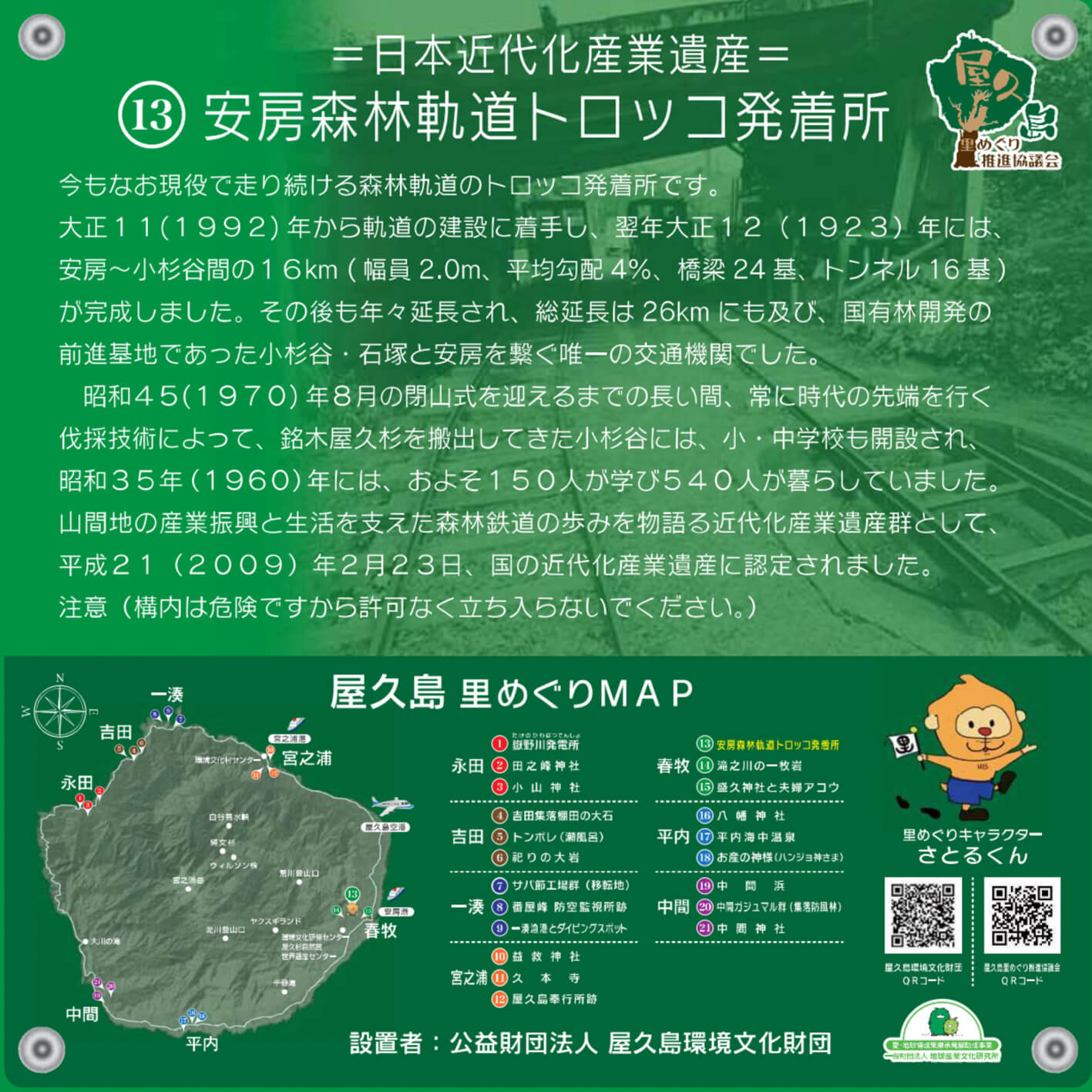harumaki
The Horse Chestnuts of Omine River
- Modification: 2024/01/10
- Area: harumaki
Horse Chestnuts may look like trees, but they are actually tree ferns (order Cyatheales), which do not grow rings as they increase in size and lack woody tissue. Instead, the trunk is a modified rhizome (such as ginger or turmeric), which sends down root bunches that thus pile atop one another and constitute the height and mass of the tree fern’s “trunk”. These root bunches are known as hegodai, and are often found adorned with epiphytes (plants that grow on another but are not necessarily parasitic).
When dinosaurs still walked the earth, broad-leafed trees had not yet evolved. Instead, pined gymnosperms and tree ferns made up the majority of forests. Here, with these pines and horse chestnuts and a little imagination, you can almost feel the rumble of dinosaurs’ footsteps and hear their munch munch munch of the horse chestnut fronds.

Odera’s Stone Pagodas
- Modification: 2024/01/10
- Area: harumaki
In this grove of camphor trees stand a few stacked natural stones and three gorintō (five-element Buddhist stone pagodas).
Due to the fact of there previously being a long-standing temple here at this site, residents of the area have long respectfully called this site Odera-san. In the special Yakushima Edition of the Kagoshima Mingu Academic Bulletin (March 2012), it was announced that in days past, a Buddhist temple of the Risshū sect called Goanji once stood at this site. Amongst the still-standing gorintō, the oldest are of a type that date back to the Risshū (mid 14th- to mid-15th centuries) or Hokke (late 15th- to early 16th centuries) eras. On Yakushima, this is the sole gorintō of the Risshū era.
The Risshū sect of Buddhism first flourished in China, eventually reaching Japan in 754 (Tenpyō-shōhō 6) through the proselytisation of the Chinese monk Jianzhen (Ganjin in Japanese). Jianzhen attempted the voyage to Japan five times and failed, losing his eyesight in the process. But on his sixth attempt, after passing through Ryūkyū (modern-day Okinawa), he stopped for ten days on Yakushima. Afterwards, he finally made landing on Japan via Akime port in Bōnotsu (near modern-day Minami-Satsuma City in Kagoshima Prefecture) before continuing on to Nara.

The Slab Stone of Ryūnokawa (Dragon’s River)
- Modification: 2024/01/10
- Area: harumaki
This gigantic slab of riverbed rock, large enough for a person to lie sprawled across when the water level is low, synthesises a stunning atmosphere together with the surrounding forest, don’t you think? But… why is it here?
This large slab of rock is of the sedimentary variety belonging to the Hinata Group (a group being a lithostratigraphic unit) often found along Yakushima’s coastline. About 40 million years ago, mud and sand at the ocean floor underwent tremendous pressure at the rifts between ocean plates, eventually across eons forming the bedrock of this island as it was pushed to the surface. Traces of this rock’s history as the bottom of an oceanic rift lingers in its horizontally level shape. Ages and ages ago, in that mud at the bottom of the ocean, lived such species as spoonworms and sand worms—the type that form zoophycos ichnofossils.
How about you try sprawling yourself out across this ancient rock and letting your imagination run away with the primordial history of Yakushima? Just be careful not to slip and hurt yourself while exploring the area!

Anbo Forest Railway Station (Heritage of Industrial Modernization)
- Modification: 2024/01/10
- Area: harumaki
This forestry railway, dating back to 1992 (Taishō 22), is still in use today. After one year of construction, the 16km railway stretching to Kosugidani Village—with a 2m breadth and an average incline of 4%, crossing 24 bridges and passing through 16 tunnels—was completed. Construction continued year after year, until the railway reached its greatest total length of 26km. For the entire span of its usage, it was the sole connection between Anbo and the mountain villages of Kosugidani and Ishidzuka at the frontier edge of the national forest.
Until its official abandonment in August of 1970 (Shōwa 45), the village of Kosugidani (Small Cedar Village) always utilised the foremost logging technologies in order to fell the choicest of trees. By 1960 (Shōwa 35), the village had a population of 540 people, 150 of those being elementary and junior high school students.
On February 23rd of 2009 (Heisei 21), this railway, which supported the close-to-nature industry and livelihoods of the mountain settlements, was designated by the Japanese Ministry of Economy, Trade, and Industry as Heritage of Industrial Modernization.
But beware! Entering the premises may pose a safety risk, so please refrain from doing so.

〒891-4205
鹿児島県熊毛郡屋久島町宮之浦823番地1
TEL:0997-42-2900
FAX:0997-49-1018
(屋久島環境文化村センター内)













